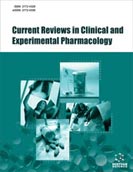Abstract
Background: Over the last decades, many brain imaging studies have contributed to new insights in the pathogenesis of psychiatric disease. However, in spite of these developments, progress in the development of novel therapeutic drugs for prevalent psychiatric health conditions has been limited.
Objective: In this review, we discuss translational, diagnostic and methodological issues that have hampered drug development in CNS disorders with a particular focus on psychiatry. The role of preclinical models is critically reviewed and opportunities for brain imaging in early stages of drug development using PET and fMRI are discussed. The role of PET and fMRI in drug development is reviewed emphasizing the need to engage in collaborations between industry, academia and phase I units.
Results: Brain imaging technology has revolutionized the study of psychiatric illnesses, and during the last decade, neuroimaging has provided valuable insights at different levels of analysis and brain organization, such as effective connectivity (anatomical), functional connectivity patterns and neurochemical information that may support both preclinical and clinical drug development.
Conclusion: Since there is no unifying pathophysiological theory of individual psychiatric syndromes and since many symptoms cut across diagnostic boundaries, a new theoretical framework has been proposed that may help in defining new targets for treatment and thus enhance drug development in CNS diseases. In addition, it is argued that new proposals for data-mining and mathematical modelling as well as freely available databanks for neural network and neurochemical models of rodents combined with revised psychiatric classification will lead to new validated targets for drug development.
Keywords: Brain imaging, psychiatry, CNS drug development, fMRI, PET, drug targets.
[http://dx.doi.org/10.1038/nrd3405] [PMID: 21629293]
[http://dx.doi.org/10.1016/j.neuropharm.2016.03.021] [PMID: 26979921]
[http://dx.doi.org/10.1038/nrd3681] [PMID: 22378269]
[http://dx.doi.org/10.1038/nrd.2016.237] [PMID: 27895328]
[http://dx.doi.org/10.1002/hbm.25013] [PMID: 32374075]
[http://dx.doi.org/10.1016/j.euroneuro.2018.06.006] [PMID: 30056086]
[http://dx.doi.org/10.1038/tp.2013.43] [PMID: 23860483]
[http://dx.doi.org/10.1176/appi.ajp.162.3.433] [PMID: 15741457]
[http://dx.doi.org/10.1177/0959354308089791]
[http://dx.doi.org/10.2217/bmm.14.114] [PMID: 25731213]
[http://dx.doi.org/10.1016/j.jpsychores.2019.109796] [PMID: 31470255]
[http://dx.doi.org/10.1038/s41582-018-0079-7] [PMID: 30297701]
[http://dx.doi.org/10.1038/nrd4075] [PMID: 23989795]
[http://dx.doi.org/10.1517/17460441.2011.584529] [PMID: 21765857]
[http://dx.doi.org/10.1038/nrd1086] [PMID: 12750740]
[http://dx.doi.org/10.1111/jnc.13516] [PMID: 26968835]
[http://dx.doi.org/10.1016/j.jconrel.2018.10.009] [PMID: 30312718]
[http://dx.doi.org/10.1038/s41591-018-0255-8] [PMID: 30478423]
[http://dx.doi.org/10.1038/s41571-018-0123-y] [PMID: 30479378]
[http://dx.doi.org/10.1186/alzrt269.]
[http://dx.doi.org/10.1002/cpph.57] [PMID: 30802363]
[http://dx.doi.org/10.1016/j.trci.2019.05.008] [PMID: 31334330]
[http://dx.doi.org/10.1038/scientificamerican0811-16] [PMID: 21827111]
[http://dx.doi.org/10.1177/1756286419859722] [PMID: 31275430]
[http://dx.doi.org/10.1186/s12974-019-1674-2] [PMID: 31870389]
[PMID: 28344933]
[http://dx.doi.org/10.3233/JAD-181121] [PMID: 30814352]
[http://dx.doi.org/10.1038/s41380-018-0345-5] [PMID: 30755720]
[http://dx.doi.org/10.1016/j.neubiorev.2018.11.013] [PMID: 30476505]
[http://dx.doi.org/10.1016/j.neubiorev.2017.12.008] [PMID: 29246661]
[http://dx.doi.org/10.1016/j.neubiorev.2018.09.015] [PMID: 30261197]
[http://dx.doi.org/10.1016/j.neubiorev.2018.09.012] [PMID: 30244163]
[http://dx.doi.org/10.1016/j.neubiorev.2018.07.018] [PMID: 30660427]
[http://dx.doi.org/10.1007/s00213-019-05344-7] [PMID: 31486875]
[http://dx.doi.org/10.1089/brain.2011.0008] [PMID: 22432952]
[http://dx.doi.org/10.1002/jmri.23581] [PMID: 22246782]
[http://dx.doi.org/10.1038/s41598-018-22571-8.]
[http://dx.doi.org/10.1038/nm.3289] [PMID: 23955713]
[http://dx.doi.org/10.1002/jmri.25549] [PMID: 27902858]
[http://dx.doi.org/10.3174/ajnr.A5997] [PMID: 30846435]
[http://dx.doi.org/10.1038/npp.2014.79] [PMID: 24694923]
[http://dx.doi.org/10.1002/nbm.3613] [PMID: 27717093]
[http://dx.doi.org/10.1038/s41386-018-0136-3] [PMID: 29977074]
[http://dx.doi.org/10.1007/s00259-017-3727-z] [PMID: 28687866]
[http://dx.doi.org/10.1073/pnas.1220512110] [PMID: 23723346]
[http://dx.doi.org/10.1016/j.ejps.2016.03.006] [PMID: 26987608]
[http://dx.doi.org/10.1038/nrd2290] [PMID: 18591980]
[http://dx.doi.org/10.1038/nrd2027] [PMID: 16604100]
[http://dx.doi.org/10.1016/j.nicl.2016.10.002] [PMID: 27766202]
[http://dx.doi.org/10.1016/j.coph.2013.11.009] [PMID: 24565013]
[http://dx.doi.org/10.1002/ddr.20163]
[http://dx.doi.org/10.1016/j.neubiorev.2017.08.004] [PMID: 28807753]
[http://dx.doi.org/10.1016/j.bja.2017.11.064] [PMID: 29406179]
[http://dx.doi.org/10.1038/nn.4179] [PMID: 26595653]
[http://dx.doi.org/10.1056/NEJMoa1204471] [PMID: 23574118]
[http://dx.doi.org/10.1523/JNEUROSCI.1954-15.2016] [PMID: 27147654]
[http://dx.doi.org/10.1016/j.neuroimage.2016.04.064] [PMID: 27132044]
[http://dx.doi.org/10.1097/j.pain.0000000000000707] [PMID: 27583567]
[http://dx.doi.org/10.1126/scitranslmed.3008438]
[http://dx.doi.org/10.1016/j.pain.2009.10.003] [PMID: 19914778]
[http://dx.doi.org/10.1097/ALN.0000000000000018] [PMID: 24343284]
[http://dx.doi.org/10.1097/ALN.0000000000000017] [PMID: 24343290]
[http://dx.doi.org/10.1067/mcp.2001.113989] [PMID: 11240971]
[http://dx.doi.org/10.1016/j.biopsych.2013.08.025] [PMID: 24094513]
[http://dx.doi.org/10.1196/annals.1440.011] [PMID: 18400922]
[http://dx.doi.org/10.1177/0269881114563635] [PMID: 25567554]
[http://dx.doi.org/10.1016/j.tips.2014.05.001] [PMID: 24906509]
[http://dx.doi.org/10.1038/npp.2009.196] [PMID: 19956085]
[http://dx.doi.org/10.2174/1381612822666160127113912] [PMID: 26818860]
[http://dx.doi.org/10.1038/npp.2009.192] [PMID: 19956088]
[http://dx.doi.org/10.1016/j.biopsych.2010.07.004] [PMID: 20728875]
[http://dx.doi.org/10.1073/pnas.1200506109] [PMID: 22355129]
[http://dx.doi.org/10.1038/nn.4361] [PMID: 27571196]
[http://dx.doi.org/10.3389/fnins.2015.00269] [PMID: 26300718]
[http://dx.doi.org/10.1002/cpns.45] [PMID: 30040200]
[http://dx.doi.org/10.1186/s12888-015-0457-2] [PMID: 25880400]
[http://dx.doi.org/10.3389/fncir.2017.00005] [PMID: 28217085]
[http://dx.doi.org/10.1016/j.euroneuro.2012.10.013] [PMID: 23165219]
[http://dx.doi.org/10.1016/j.jpain.2016.04.005] [PMID: 27263992]
[http://dx.doi.org/10.1016/j.semarthrit.2015.05.002] [PMID: 26092329]
[http://dx.doi.org/10.1007/s00296-018-4085-2] [PMID: 29936571]
[http://dx.doi.org/10.1111/jop.12838] [PMID: 30735586]
[http://dx.doi.org/10.1097/MD.0000000000010145] [PMID: 29561420]
[http://dx.doi.org/10.1016/j.neuroimage.2009.05.068] [PMID: 19497372]
[http://dx.doi.org/10.1002/ejp.1304] [PMID: 30101509]
[http://dx.doi.org/10.1007/BF02244926] [PMID: 7871035]
[http://dx.doi.org/10.1097/00004647-199601000-00005] [PMID: 8530554]
[http://dx.doi.org/10.1007/BF02245614] [PMID: 8935809]
[http://dx.doi.org/10.1016/0024-3205(96)00013-6] [PMID: 8602111]
[http://dx.doi.org/10.1007/s002130050069] [PMID: 10928313]
[http://dx.doi.org/10.1016/j.nucmedbio.2007.07.015] [PMID: 18158941]
[http://dx.doi.org/10.1038/nprot.2010.13] [PMID: 20360768]
[http://dx.doi.org/10.1038/clpt.2010.12] [PMID: 20357763]
[http://dx.doi.org/10.1017/S1461145704004353] [PMID: 15683553]
[http://dx.doi.org/10.1242/dmm.042200] [PMID: 31704726]
[http://dx.doi.org/10.1021/jm5001858] [PMID: 25144329]
[http://dx.doi.org/10.1016/j.vascn.2017.01.001] [PMID: 28063918]
[http://dx.doi.org/10.1142/9789814317740_0009]
[http://dx.doi.org/10.1002/jat.2857] [PMID: 23400798]
[http://dx.doi.org/10.1016/j.nbd.2019.01.016] [PMID: 30825640]
[http://dx.doi.org/10.2967/jnumed.116.183020] [PMID: 28336784]
[http://dx.doi.org/10.1007/s11682-018-9967-0] [PMID: 30259405]
[http://dx.doi.org/10.1097/j.pain.0000000000000831] [PMID: 28301400]
[http://dx.doi.org/10.1111/head.13305]
[http://dx.doi.org/10.1007/164_2018_201] [PMID: 30725283]
[http://dx.doi.org/10.1007/s00213-005-2260-0] [PMID: 15875166]
[http://dx.doi.org/10.1186/s12967-016-0904-y] [PMID: 27230663]
[http://dx.doi.org/10.1007/s11307-009-0204-5] [PMID: 19333655]
[http://dx.doi.org/10.1097/MNM.0b013e328347e96f] [PMID: 21876400]
[http://dx.doi.org/10.1038/sj.npp.1300260] [PMID: 14666114]
[http://dx.doi.org/10.1016/j.biopsych.2004.02.007]
[http://dx.doi.org/10.2967/jnumed.108.054353] [PMID: 18927336]
[http://dx.doi.org/10.1016/j.jad.2017.07.042] [PMID: 28753469]
[http://dx.doi.org/10.1038/tp.2015.92] [PMID: 26151925]
[http://dx.doi.org/10.1016/j.jad.2018.08.084] [PMID: 30193189]
[http://dx.doi.org/10.1002/syn.890210107] [PMID: 8525461]
[http://dx.doi.org/10.1016/j.pharmthera.2009.03.002] [PMID: 19306894]
[http://dx.doi.org/10.1007/978-3-642-78010-3_9] [PMID: 8103229]
[http://dx.doi.org/10.1111/j.1755-5949.2010.00222.x] [PMID: 21143431]
[http://dx.doi.org/10.1097/JCP.0b013e31828b28d5] [PMID: 23609380]
[http://dx.doi.org/10.1177/070674370204700106] [PMID: 11873706]
[http://dx.doi.org/10.1007/s00213-002-1083-5] [PMID: 12107615]
[http://dx.doi.org/10.1097/JCP.0b013e3182983ffa] [PMID: 23948784]
[http://dx.doi.org/10.1021/cn400189s] [PMID: 24219174]
[PMID: 8965181]
[http://dx.doi.org/10.1007/s002130100761] [PMID: 11512044]
[http://dx.doi.org/10.1007/s40265-019-1052-5] [PMID: 30671869]
[http://dx.doi.org/10.1517/17425255.2013.759211] [PMID: 23320989]
[http://dx.doi.org/10.1002/syn.21535] [PMID: 22213512]
[http://dx.doi.org/10.1007/s00213-016-4382-y] [PMID: 27525990]
[http://dx.doi.org/10.1124/jpet.105.097006] [PMID: 16469866]
[http://dx.doi.org/10.1016/j.schres.2019.02.018] [PMID: 30837203]
[http://dx.doi.org/10.1016/S0893-133X(02)00304-4] [PMID: 12093598]
[http://dx.doi.org/10.1371/journal.pone.0046488] [PMID: 23029533]
[http://dx.doi.org/10.1007/s40263-015-0278-3] [PMID: 26346901]
[http://dx.doi.org/10.1021/acschemneuro.7b00087] [PMID: 28368577]
[http://dx.doi.org/10.2174/0929867043456043] [PMID: 14965236]
[http://dx.doi.org/10.1038/mp.2013.136] [PMID: 24166406]
[http://dx.doi.org/10.3390/ijms18081689] [PMID: 28771182]
[http://dx.doi.org/10.1007/s002130000532] [PMID: 11057521]
[http://dx.doi.org/10.1007/s00213-011-2306-4]
[http://dx.doi.org/10.1097/JCP.0b013e31828ea95c] [PMID: 23609386]
[http://dx.doi.org/10.2174/092986706777935258] [PMID: 16918344]
[http://dx.doi.org/10.2967/jnumed.114.148619] [PMID: 25593112]
[http://dx.doi.org/10.1038/npp.2008.148] [PMID: 18830236]
[http://dx.doi.org/10.1097/FPC.0b013e32831a6a3a] [PMID: 18987562]
[http://dx.doi.org/10.1097/JCP.0b013e31818ba2f6] [PMID: 19011428]
[http://dx.doi.org/10.1176/appi.ajp.2007.06091479] [PMID: 17728427]
[http://dx.doi.org/10.1038/npp.2008.166] [PMID: 18843264]
[http://dx.doi.org/10.1038/jcbfm.2010.175] [PMID: 20940733]
[http://dx.doi.org/10.1177/0269881113517953] [PMID: 24429221]
[http://dx.doi.org/10.1212/WNL.0000000000005550]
[http://dx.doi.org/10.1186/s13195-018-0424-5] [PMID: 30231896]
[http://dx.doi.org/10.1080/13543784.2017.1323868] [PMID: 28460541]
[http://dx.doi.org/10.1038/nature19323] [PMID: 27582220]
[http://dx.doi.org/10.2967/jnumed.118.209130] [PMID: 29777003]
[http://dx.doi.org/10.1038/s41582-018-0116-6] [PMID: 30610216]
[http://dx.doi.org/10.1517/14712598.2014.935332] [PMID: 24981190]
[http://dx.doi.org/10.1111/cts.12619] [PMID: 30706986]
[http://dx.doi.org/10.1111/j.1369-1600.2012.00485.x] [PMID: 22978651]
[http://dx.doi.org/10.1007/s00429-015-0999-6] [PMID: 25697666]
[http://dx.doi.org/10.1371/journal.pbio.2002612] [PMID: 28671956]
[PMID: 28031269]
[PMID: 31982357]
[http://dx.doi.org/10.1038/nn.4478] [PMID: 28230847]
[http://dx.doi.org/10.1016/j.tips.2019.06.004] [PMID: 31320117]
[http://dx.doi.org/10.1016/j.neuron.2014.08.034] [PMID: 25475184]
[http://dx.doi.org/10.1016/j.artmed.2019.101704] [PMID: 31606109]
[http://dx.doi.org/10.1016/j.eng.2019.11.012]
[http://dx.doi.org/10.1016/j.pnpbp.2018.09.014] [PMID: 30290208]
[http://dx.doi.org/10.1038/s41467-018-07289-5] [PMID: 30510233]
[http://dx.doi.org/10.1111/bph.13826] [PMID: 28432778]
































